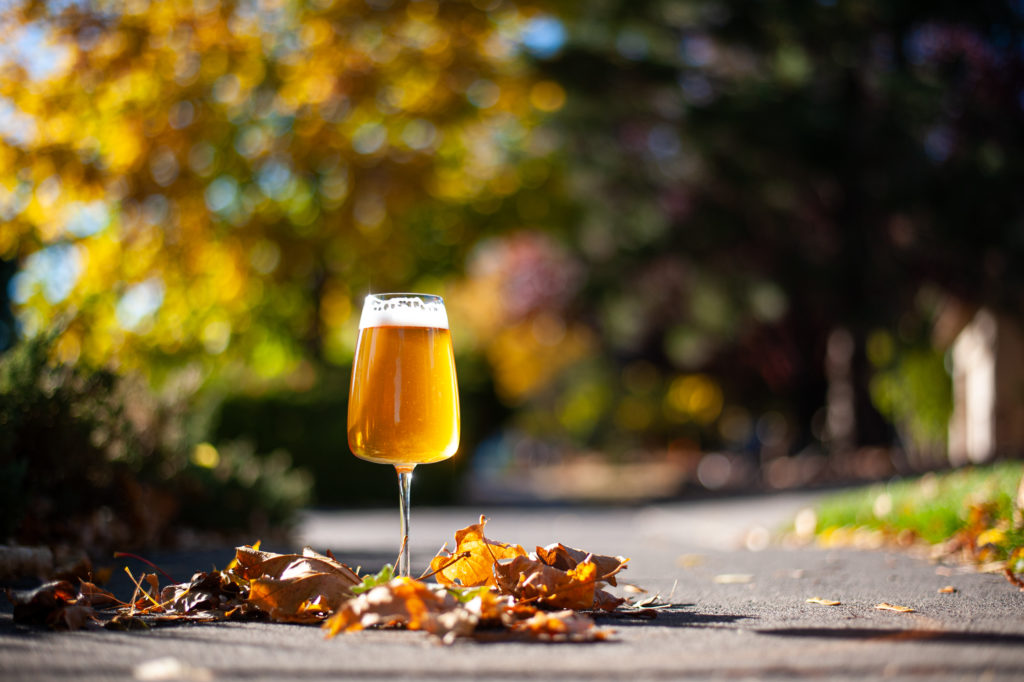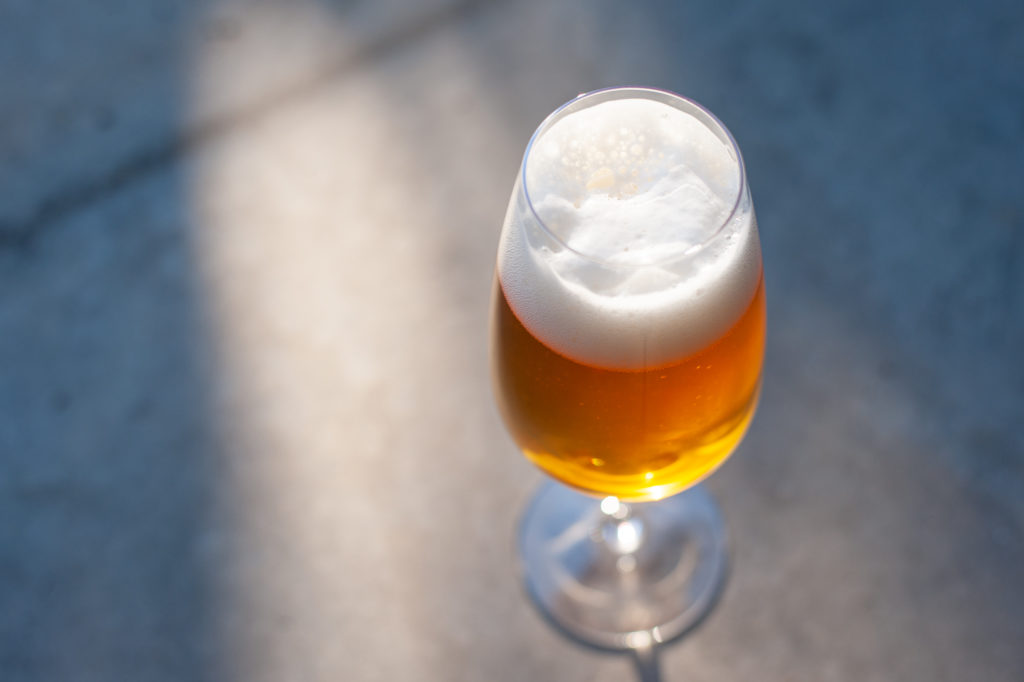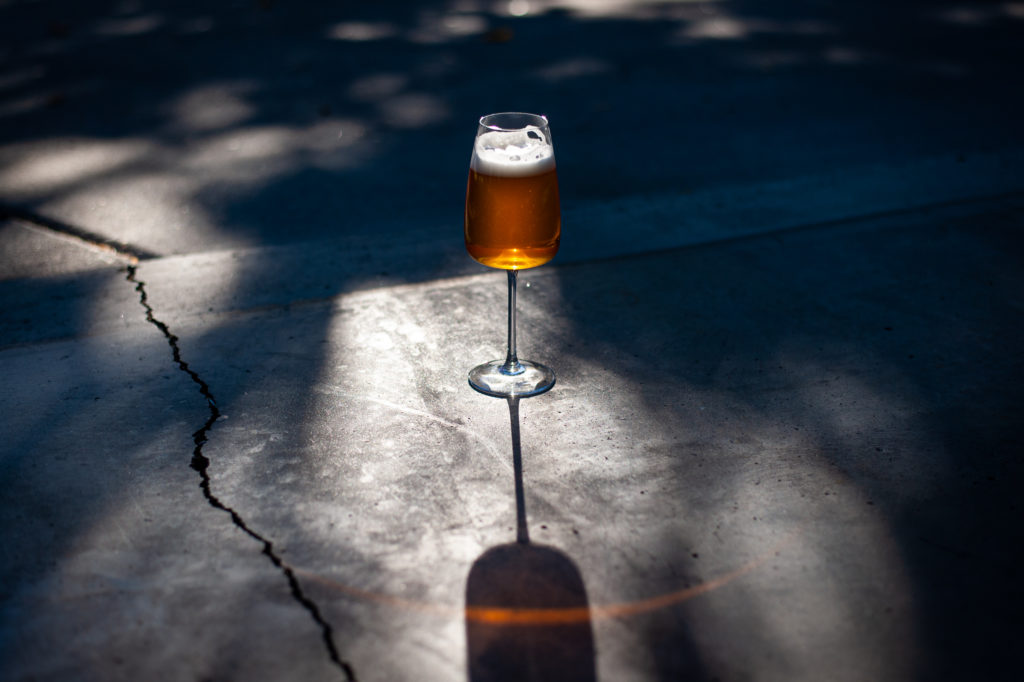Seasonally Appropriate Drinking: Festbier

I always mean to brew a maibock in the spring. I always plan a stout for the winter. And yes, I always think about brewing a German festbier for Oktoberfest. But does it always happen? No, almost never. I brew a lot, yes, but I am terrible at brewing to a plan.
This year, however, the stars aligned, and I not only managed to time brewing a festbier so that it was just hitting its stride when October rolled around—I produced a legit banger, too.
But what’s a German festbier, and how does it differ from what you commonly see sold as Oktoberfest beer? It’s a long story, but the short version is this: The amber-colored, malty, sweet beer called Oktoberfest was what was sold at the Munich Oktoberfest’s tents from the late 19th century until 1990, when the fest’s organizers made a deliberate move to make a paler, stronger lager called festbier the official beer of Oktoberfest.
This new-school festbier is essentially identical to a Dortmunder Export, aka Helles Exportbier—smooth, pale gold, lightly hopped with noble hops, and boasting rich German malt character despite using only pilsner malt and a bit of Vienna or Munich.
As a brewer, festbier—like all pale lagers—is a significant challenge, one that requires your A-game when it comes to ingredient selection, brewing protocols, and fermentation process.
What’s in it?
The Vitals
- Name: Fest Dressed
- Category: BJCP 4B
- Method: BIAB, full-volume mash
- Batch size: 4 gallons
- Mash: Step mash: 40 mins @ 144F, 40 mins @ 154F, decoction mash-out (1/3 thick)
- Boil: 70 minutes
- Fermentation: 48F for 8 days; 62F for 3 days (d-rest); 32F for 4+ weeks
- OG: 1.056 (13.8 Bx)
- FG: 1.012 (7 Bx)
- ABV: 5.8%
- IBU: 23
The Grain
- 4 lbs 11.2 oz BEST Heidelberg Pilsner (62.3%)
- 1 lbs 4.8 oz Weyermann Munich I (17.2%)
- 1 lbs 4.8 oz Weyermann Vienna (17.2%)
- 4 oz Weyermann Melanoidin (3.3%)
The Hops
- 42g Hallertau Mittelfrueh [3.6% AA] @ 70 minutes (25.4 IBU)
- 15g Hallertau Mittelfrueh @ 10 minutes (3.2 IBU)
The Rest
- Yeast: 2 packets Fermentis Saflager W-34/70, dry
- Water: 5.15 gallons Bend tap + 2.9g calcium chloride, 1.8g gypsum, 5g lactic acid 88%
- Presumed Water Profile: Ca2+ 70 | Cl– 74 | SO42- 53 | Mash pH 5.28
» BeerXML Download «
How’d it go?
This beer represented my first stab at decoction, albeit just a single mash-out decoction. Following Braukaiser’s advice for modern malts, I used a step mash—40 minutes at 144F and 40 minutes at 154F—and then pulled a thick 1/3 volume decoction which I boiled for 15 minutes and then added back to the main mash to bring it to around 170F. That worked perfectly, which was nice to see!
Both my pre-boil and original gravities came in a single point under the Brewfather estimate, which is certainly close enough, so I proceeded to chill the wort to the high 50s before pitching two packets of Saflager W-34/70 into my fermentation keg and giving it a swirl. I set the fermentation chamber to 48F and went to bed.
Visible fermentation had kicked off by the following evening, and was really rocking by lunchtime on the second day. I let it ride at 48 until the fifth day of fermentation, when I bumped it up a couple degrees. By the morning of the seventh day, fermentation was nearly complete. With the beer sitting at 1.015, I bumped the temp to 62F for a diacetyl rest and left it there for a few days before crashing to near freezing.
I was surprised to find that the FG was a relatively high 1.012, compared to the 1.007 predicted by Brewfather. (However, both the OG and FG are right in the ballpark dictated by the BJCP.) This meant that my festbier was decidedly on the light side, ABV-wise, at just 5.8%, and samples revealed it did have a slightly heavy mouthfeel. Nevertheless, it was absolutely delicious, so I moved it to the keezer and let it start its long lagering. Altogether, I let it sit about 6 weeks at keezer temps before really digging into it.
How’s it taste?

Appearance: This beer took its damn time—as a lot of W-34/70 beers are wont to do—but it did finally drop clear after about a month and change of sitting at 32F. (The photos here don’t do justice to how clear it is, since I took them a bit before the lagering had finished its work.) It’s a perfect gold color with a fluffy white head on pouring that dissipates to virtually nothing (just a fine white rim around the edges of the glass) in a short span of time. There’s no real lacing, either. There’s nothing wrong with the carb here, it’s verging on spritzy, so I’m guessing something about my mashing regimen caused the head retention issues. This bears some investigation. Overall, a pretty beer, but it could be better.
Aroma: Malt-driven, with a honey-like note that I’m going to attribute to a) using all German malt, and b) especially the small addition of melanoidin malt. The hops are there, but pretty far in the background. Nothing phenolic, no apparent alcohol. In other words, it smells like a good German lager. Check!
Taste: Tastes like one, too. Overall I’m amazed how close to the mark I got on my first try. The main impression here is honeyed, biscuity malt with a lingering richness. I think my main complaint would be that it needs just a tiny bit more bitterness and some more noble hop character, though that’s personal preference more than meeting the style criteria. (The BJCP says a festbier should have “medium-low to medium floral, herbal, or spicy hop flavor,” which is already the case here.) I’m not sure whether I’d move the aroma hops even later, or tilt the ratio toward a slightly larger late addition, or both. But regardless of personal preferences, I’m pretty sure if I served this alongside actual German festbiers, many tasters wouldn’t be able to single it out, and I’ll call that a win.
Mouthfeel: Despite the generous carb, it feels slightly heavy. That’s in line with many German festbiers I’ve had (I’d say this one tastes a lot like Schönramer Gold), but also makes me think I could carb even a bit higher next time. The taste sticks around longer than other lagers I’ve made, probably due to the combo of melanoidin and a slightly higher FG. Overall it’s very pleasant, but I might get a bit fatigued drinking a liter of it.
Would I brew it again?

Oh, absolutely! I’m already tweaking the recipe for next year, mainly to introduce slightly more hop character. I’m totally stoked with this start, but convinced I can make a legendary festbier with a bit more practice.

Curious if you updated the recipe yet and if so, what changes you made.
The Saccharification rest temp I have to think is largely responsible for the higher than expected FG; I like to stay low on these to dry them out.
I’m curious if you found the level of Pilsner / Saltine cracker taste to be too high from the Heidelberg Pilsner malt or whether having it at only 62% made that not an issue. (I’ve found it to have by far the most intense crackery pilsner malt flavor of any German malt and I stay away from it for anything except a full-fledged north German Pilsner.)
Hey Adam! I haven’t re-brewed this one yet, but I likely will in a month or two. Re: the sacc rest temp, I intentionally went high because I have historically had issues with overattenuation in the majority of my beers. I think this has to do with using a Brewzilla without recirculation, which leaves the top of the mash cooler than the bottom, despite frequent stirring. I still haven’t totally nailed it down, though. On the pils subject, I’ve finished that bag of Heidelberg and haven’t bought more; I liked it fine, and definitely didn’t get too much of a crackery character, but I’ve found the regular Best Pils gets me more in the color ballpark I want for most beers and, yes, has a bit of a rounder flavor. I’ve also been experimenting with IREKS pils and like it quite a lot, but it’s harder to get my hands on and seems to have WAY more protein than Best or Weyermann (takes forever to clear).